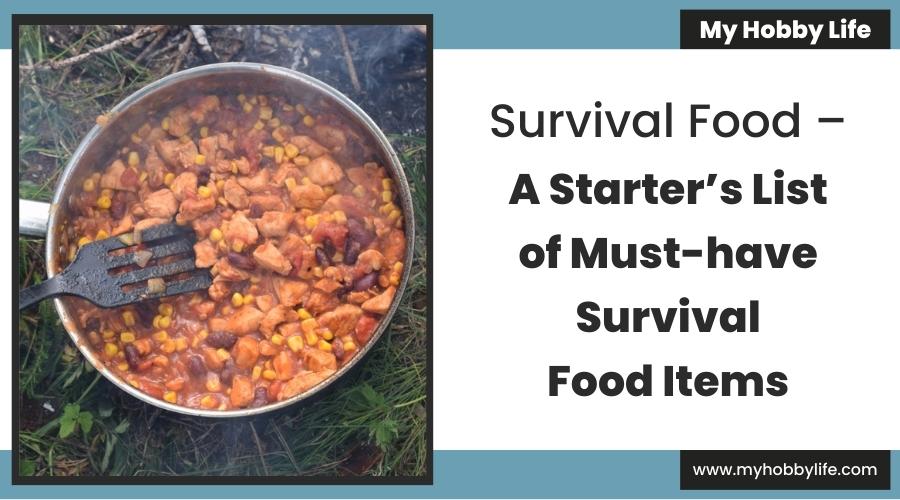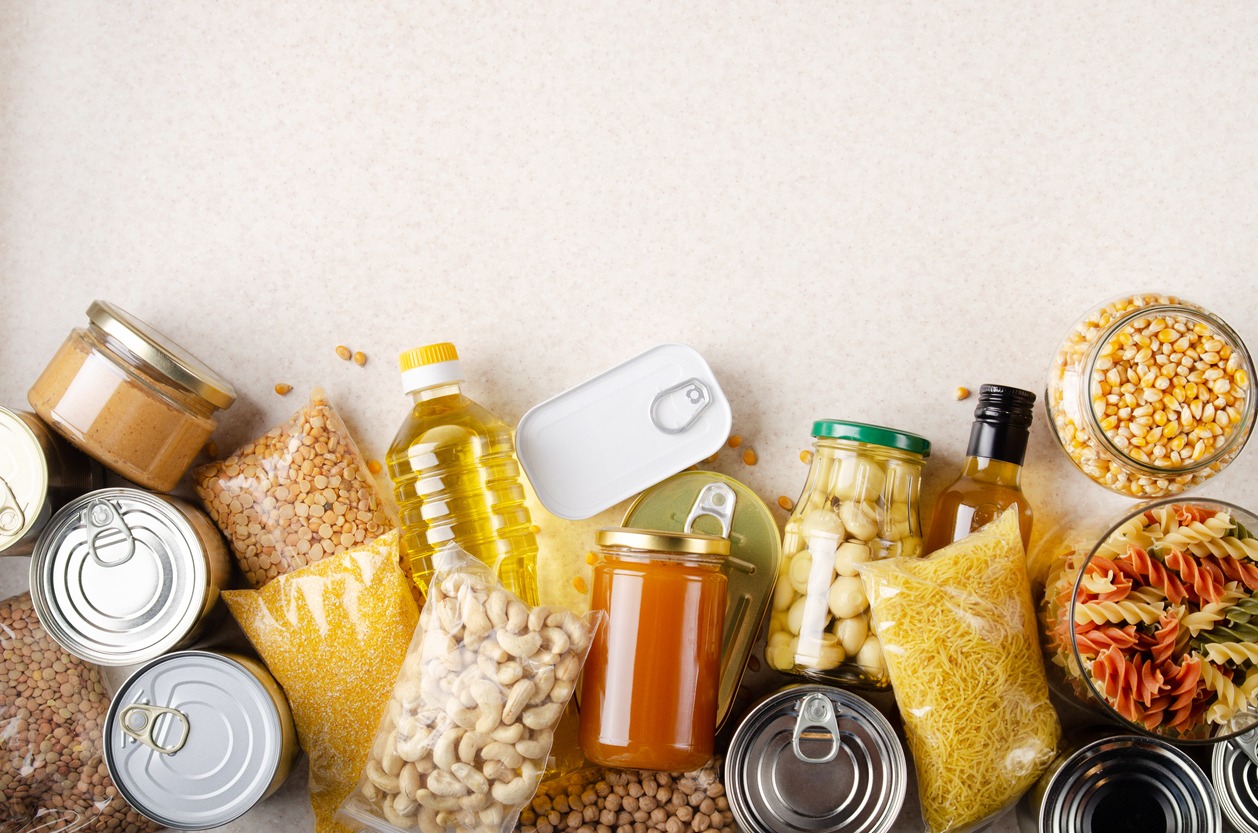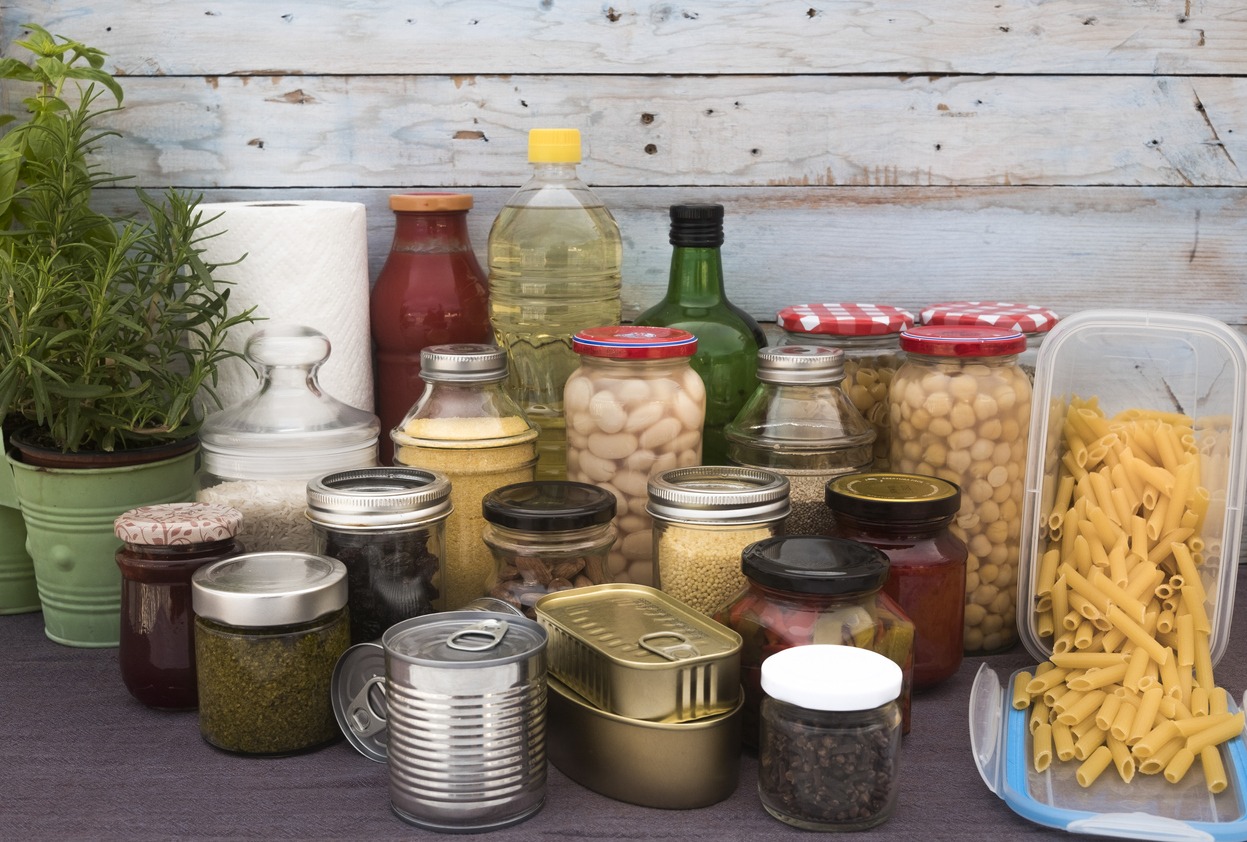Food is necessary for human life, and when one is only striving to survive, plain food is preferred. Most individuals prefer to eat dishes that are both tasty and straightforward, and some of these are listed below. Although having emergency food on hand is a good idea, it is useless if it cannot be prepared. The need for a refrigerator or freezer will be eliminated if you have food that keeps at room temperature or if you only prepare enough food for one meal per day. If the power goes out, preservation will be more difficult.
Criteria for Selecting Survival Foods
There are a few considerations to make when selecting foods for either a short-term or long-term food supply.
Life Expectancy
The entire concept of survival food is to store food that will last for an extended period. If the food you choose does not have a long shelf life, the whole point is lost. Most things have best-before dates listed on the package so that you can get an idea. Avoid stocking things that won’t survive at least a year.
Simple to Make
Given that we cannot predict the type of emergency we may encounter, it is advisable to select food items that can be eaten raw or with little preparation. The best food options include white rice, canned beans, and protein bars.
Storability
Store food in airtight containers as much as possible. The plastic container in which they are commonly sold can shorten their shelf life. Your primary priority should be storing food that does not need to be cooked using power or fuel.
Value in Nutrients
It’s not necessary for stored food to be plain or to be a pure fast-food meal just because you need to eat it to survive. Make sure to stock up on wholesome foods. The majority of common survival foods are incredibly nutritious and designed to keep you strong and active when you need them most.
Survival Food Items
It might be very difficult to prepare enough food to sustain you and your family for a very long time. There is a reason why certain meals continue to be so well-liked among survivalists and preppers. for instance, beans and rice. They are nutritious, filling, and have a long shelf life.
Beans
Beans are one of the finest options when looking for a food that is high in calories, fiber, and even a small amount of protein. Nutritional information will vary significantly between kinds, but generally speaking, you’ll notice differences. Your dried beans can be kept in a container that is tightly sealed and safe for food storage, ideally in a cold, dry location.
Most people estimate that they will remain in pristine condition for around a year before beginning to dry out. Beans are inexpensive and filling. They are also among the most well-liked survival meals and are simple to store, rich in nutrients, and have a long shelf life. You can also plant some of your beans to increase production.
Rice
Rice is a fantastic source of carbohydrates, it is reasonably priced, and keeps for a very long time. White rice is readily available in all supermarkets, and with correct preservation methods, it can be kept for ten to twenty years. Make sure to include a bag of rice on your list every time you visit the supermarket.
Canned Soup
The ease of canned soup is its main benefit. Most people heat it beforehand, although that is not necessary. You can consume canned soup directly from the can for a quick and simple dinner. Purchase only soups that your family will genuinely enjoy.
Canned Tuna
One of the few meat products on this list, tuna is a fantastic survival food. For meats, spoiling is a serious issue, but tuna has a long shelf life and can be kept unopened for up to five years, making it a fantastic source of delectable protein in an emergency.
Salt and Sugar
Salt is among the simplest commodities to purchase and keep. It is used to preserve other foods in addition to lasting a lifetime. When stored properly, sugar, whether brown or white, has a shelf life of more than ten years. Sugar has many benefits, including improving our calorie intake and flavoring food. The next time you go shopping, don’t be afraid to buy an extra bag of these two.
Coconut Oil
Many different meals must be cooked with oil. Unfortunately, the shelf life of most oils is too short. Contrarily, coconut oil can be used for up to two years before it starts to go bad. The finest oil to use for frying in the aftermath of a disaster is coconut oil. It also has a lot of additional uses and is one of the healthiest cooking oils available.
Coffee
It takes a lot of energy to survive after a disaster, so you should learn how to prepare coffee when the power is off. Thankfully, coffee has a long shelf life and is inexpensive enough to save up a significant amount for difficult times.
Cornmeal
Consider saving cornmeal for your post-disaster baking requirements rather than flour. Most recipes allow you to substitute cornmeal for flour, and it also has a longer shelf life. While flour needs yeast and oil to produce bread or biscuits, flour may be used to make cornbread and tortillas, which can be baked without these ingredients and turn out well when cooked in a pan or a solar oven.
Honey
Since honey isn’t very inexpensive, thrifty preppers may find it difficult to justify buying it in bulk. However, honey is one of the few sweets with an endless shelf life and can be utilized to offer a great boost of calories and flavor to a meal. Additionally, honey is healthy for you. A little honey goes a long way as long as you use it carefully.
MREs
MREs are familiar to anyone who has served in the military or is currently on active duty. Meals Ready to Eat is referred to as MRE. It is essentially a self-contained full meal made to resist challenging circumstances and continuous exposure to the outdoors. They are extremely valuable for long-term storage because they are the primary operational food ration of the United States Armed Forces. Even though you can usually expect these meals to last for two to three years when stored at 80 degrees Fahrenheit, any lower temperature will extend their shelf life. Besides MREs and emergency food supplies, you will also need to prepare tools and other items for survival. Check out the Guide to Selecting Survival Gear for more information.
Time and tide, it is claimed, do not wait for men. Nature does not wait for man, even though technological improvements have made everything feasible alternatives. Natural or man-made disasters might strike at any time. Food is an essential human necessity, therefore having a list of survival foods will help you be ready when an emergency arises.


